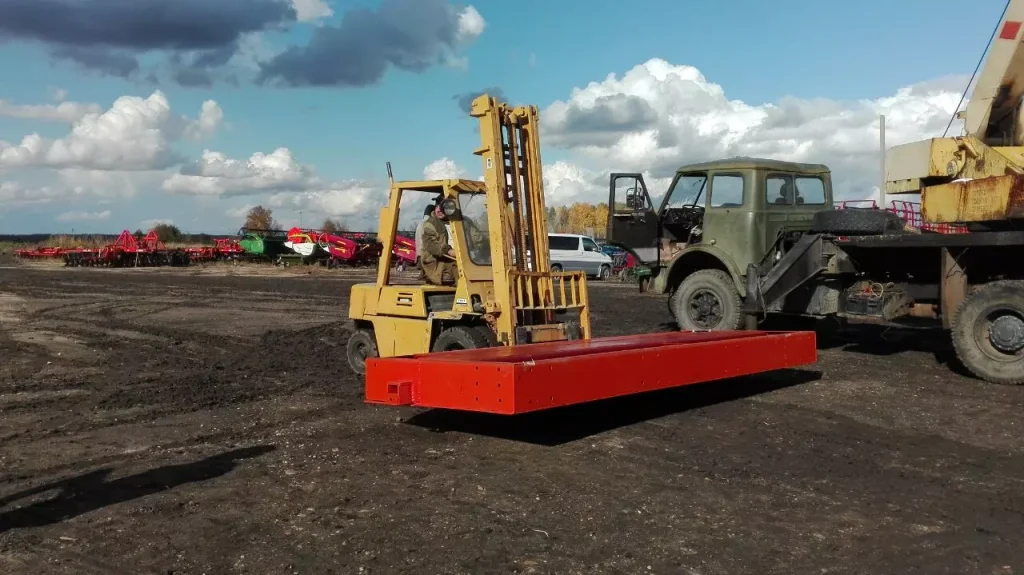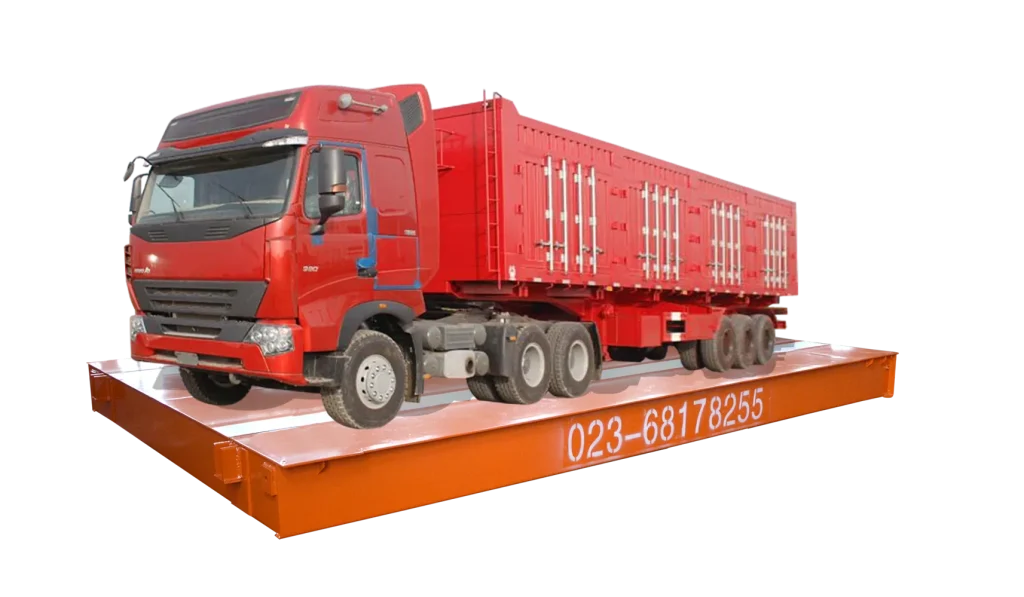Bincen Weighbridges: Ensuring Accuracy Even with Steel Slopes
Traditional flat weighbridges might not always be feasible due to space constraints or site limitations. This is where weighbridges with steel slopes come in as a valuable alternative. But a natural question arises: Do these inclined surfaces compromise the accuracy of the weighbridge? This article looks deeper into this question, exploring the potential impact of steel slopes on weighbridge performance. We’ll also unveil the significant benefits these sloped weighbridges offer and showcase the multiple options provided by Bincen, a trusted name in weighbridge solutions.
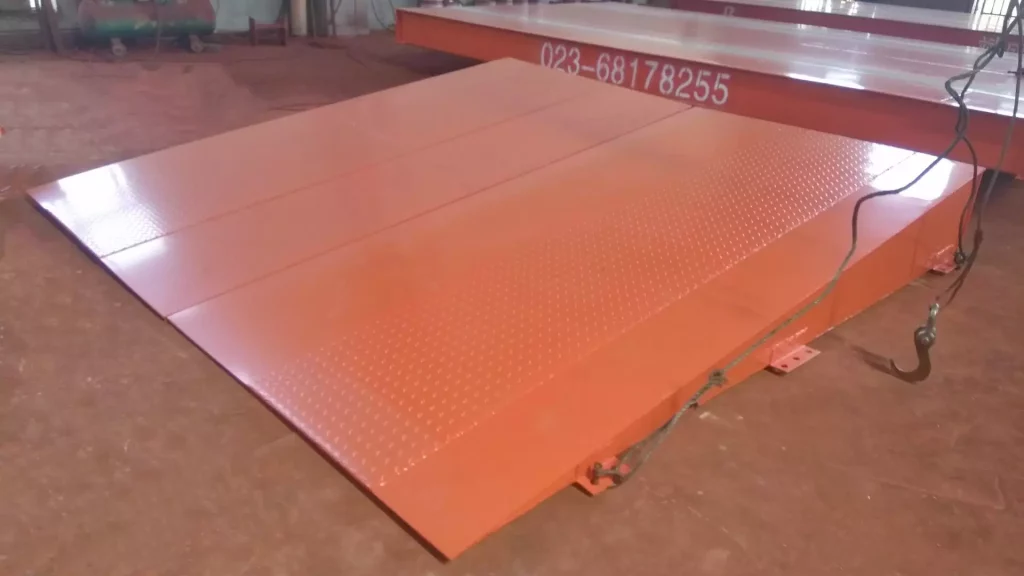
What Are the Benefits of Using a Weighbridge with a Steel Slope?
While traditional flat weighbridges are widely used, weighbridges with steel slopes offer several advantages in specific situations. Here’s a breakdown of the key benefits:
1. Improved Accessibility for Low-Ground-Clearance Vehicles
- Challenge for Traditional Weighbridges: Vehicles with low ground clearance, such as sports cars or heavy machinery, may struggle to use a flat weighbridge. The vehicle’s bottom may scrape against the edge while mounting the platform.
- The Slope Advantage: A weighbridge’s inclined steel slope allows vehicles with low clearance to transition gradually. This eliminates the scraping issue and makes it easier to access the weighbridge platform.
2. Enhanced Drainage
- Pooling Problems on Flat Surfaces: Flat weighbridges can accumulate water, especially during rain or snow. This can result in a slippery surface, posing a safety risk.
- Drainage Efficiency of Slopes: The inclined design of a steel slope naturally encourages water drainage. Water flows down the slope and away from the weighbridge platform, lowering the risk of pooling and increasing overall safety.
3. Reduced Excavation Requirements (Depending on Design)
- Challenges of Flat Installations: Installing a traditional flat weighbridge may necessitate extensive excavation to create a pit for the platform to sit below ground level. This can be time-consuming, expensive, and disruptive.
- Slope Efficiency (Single Slopes): In some cases, especially with single-slope weighbridges, less excavation is required than in a flat installation. The slope itself can be partially constructed above ground level, eliminating the need for extensive digging.
It is important to note that weighbridges with steel slopes have some disadvantages, such as potential increased construction complexity and traffic flow limitations when compared to flat weighbridges. Before purchasing a weighbridge with a steel slope, carefully consider your specific requirements and site limitations.
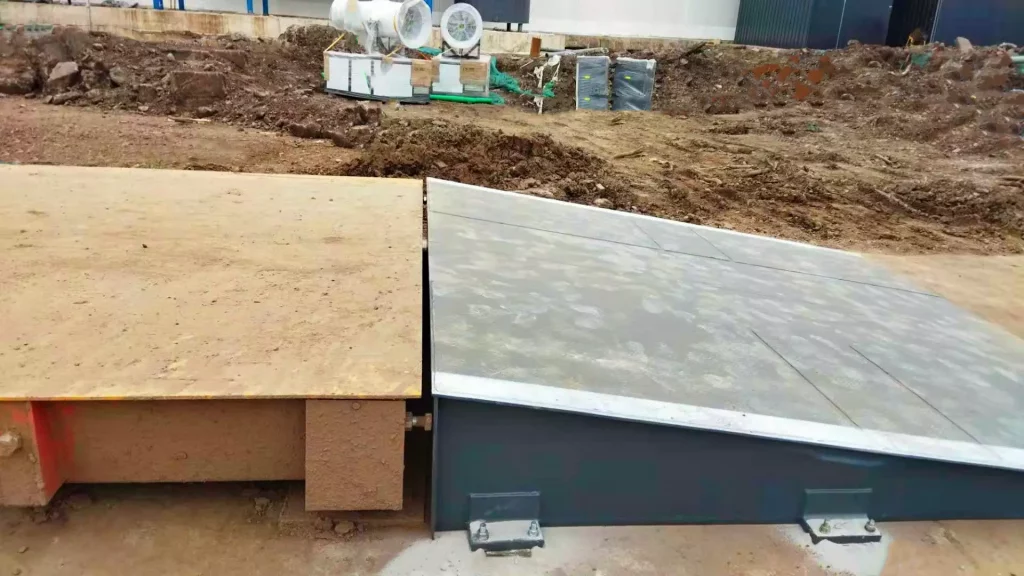
Does a Steel Slope Affect the Accuracy of the Weighbridge?
The question of whether a steel slope affects weighbridge accuracy is valid. While weighbridges are intended to provide precise weight measurements, the addition of an inclined surface introduces a new variable to consider. Here’s an overview of the potential impact and how to ensure accurate weighing:
Potential Effects of a Steel Slope
- Weight Distribution Shift: On a flat weighbridge, the vehicle’s weight is evenly distributed among the load cells. However, on a sloped surface, the weight distribution may shift slightly to the downhill end.
- Impact on Load Cell Readings: This shift in weight distribution may affect the readings of the load cells, which are the sensors that measure the vehicle’s weight.
Mitigating the Impact and Ensuring Accuracy
- Calibration for Slope Compensation: Most modern weighbridge systems can be calibrated to compensate for the effect of a steel slope. This calibration procedure entails simulating the weight distribution along the slope and adjusting the load cell readings accordingly.
- Manufacturer Expertise: Consult the weighbridge manufacturer or a qualified technician about performing the calibration for your specific slope configuration. They will have the necessary expertise and equipment to take precise weight measurements.
- Software Adjustments: Some weighbridge software systems may include built-in features that automatically compensate for slope angles. These features can improve the weighbridge’s accuracy.
Additional Considerations
- Slope Angle: The slope has a greater impact on accuracy as the incline increases. If high accuracy is required, a weighbridge with a gentle slope angle is suggested.
- Maintenance: Regular weighbridge maintenance, including calibration checks, is required to maintain maximum accuracy, regardless of whether it has a flat surface or a steel slope.
While a steel slope may cause a slight shift in weight distribution, this effect can be mitigated with proper calibration and software adjustments. Consulting with a qualified weighbridge professional can help ensure that your steel slope weighbridge produces accurate and reliable weight measurements.
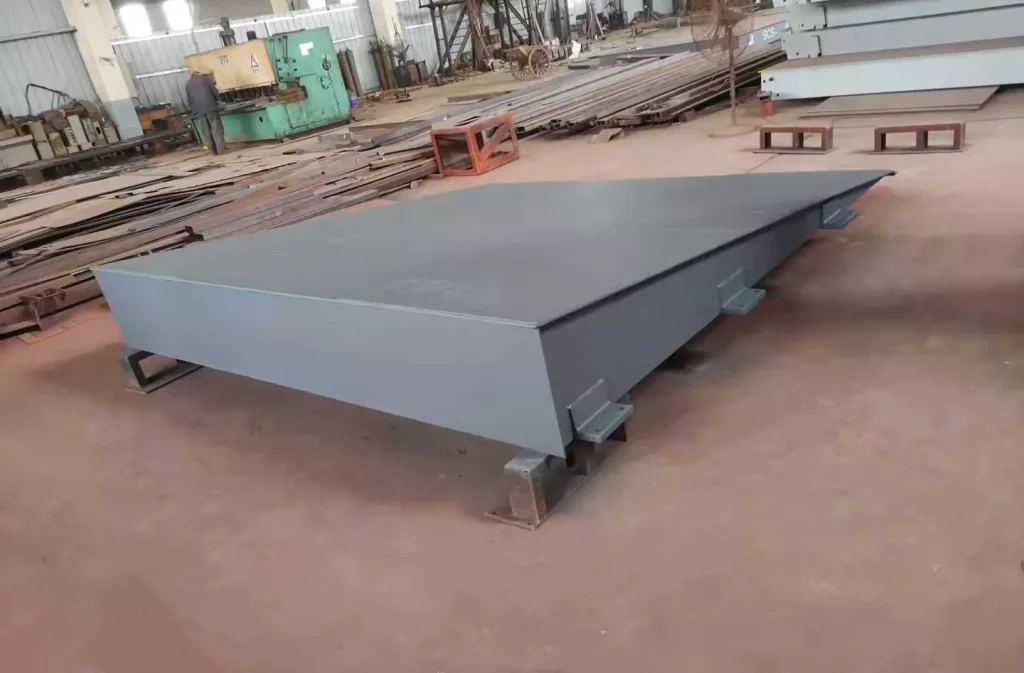
Weighbridges With Steel Slope Provided by BIncen
Weighbridge manufacturing company BIncen provides multiple weighbridges with steel slopes: single slope, double-sided slope, and split slope. The choice among different slope configurations depends on specific application needs and site characteristics.
| Single Slope | Double-Sided Slope | Split Slope | |
| Description | A single inclined plane that allows vehicles to drive onto the weighbridge at an angle. | Two opposing inclined planes create a V-shaped entry and exit for vehicles. | A single inclined plane is divided into two sections, with a flat platform at the center. |
| Suitability | Ideal for sites with limited space in one direction, allowing for a straight approach to the weighbridge. | Suitable for sites where vehicles need to enter and exit from different directions, such as drive-through weighbridge applications. | Well-suited for sites where vehicles require a level area for loading or unloading goods after weighing. |
| Vehicle Clearance | Provides ample clearance for vehicles with low ground clearance, as the entire approach is inclined. | Offers generous clearance on both sides, accommodating a wider range of vehicle heights. | Provides clearance for vehicles with low ground clearance, but the flat center section allows for additional clearance if needed. |
| Drainage | Effective drainage due to the single-direction slope, preventing water accumulation. | Excellent drainage due to the opposing slopes, minimizing water pooling. | Adequate drainage, with the flat center section acting as a collection point for water. |
| Excavation Requirements | Less excavation is required compared to double-sided or split slopes, as only one incline needs to be created. | More excavation is needed compared to a single slope, as two inclines must be constructed. | Moderate excavation requirements, with a balance between single and double slopes. |
| Construction Complexity | Simpler construction due to the single incline, makes it a cost-effective option. | More complex construction involving two inclines, potentially increasing costs. | Intermediate construction complexity, with the flat center section adding an element to the design. |
| Traffic Flow | Efficient for one-way traffic, allowing vehicles to enter and exit in the same direction. | Accommodates two-way traffic, enabling vehicles to enter and exit from opposite directions. | Suitable for one-way or two-way traffic, depending on the configuration of the flat center section. |
| Application Examples | Ideal for weighbridges at recycling centers, scrap yards, or industrial facilities with limited space. | Well-suited for weighbridges at truck stops, border crossings, or logistics hubs where vehicles approach from different directions. | Suitable for weighbridges at manufacturing plants, warehouses, or loading docks where vehicles need a level area for loading or unloading. |
A single-slope weighbridge is an economical solution for space-constrained locations with one-way traffic. Double-sided slopes are best for two-way traffic, whereas split slopes offer both clearance and a flat area for loading or unloading. Careful consideration of these factors results in the selection of the best weighbridge configuration for maximum performance and safety.
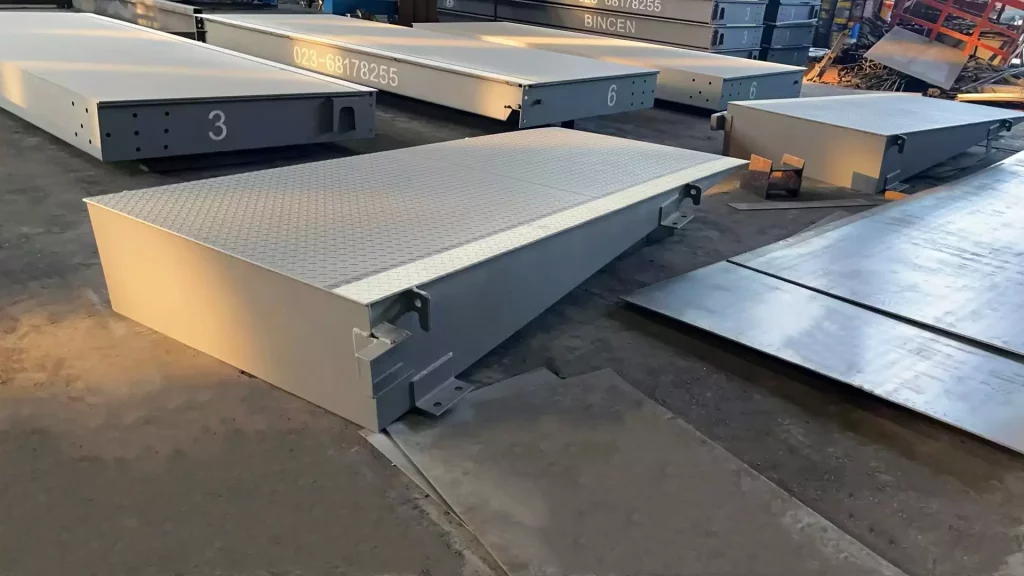
Conclusion
Weighbridges with steel slopes present a compelling option for situations where traditional flat installations are not ideal. They offer improved accessibility for low-clearance vehicles, enhanced drainage, and potentially reduced excavation requirements. While the slope can introduce a slight shift in weight distribution, this impact can be effectively mitigated through proper calibration and software adjustments. By understanding the factors involved and consulting with weighbridge professionals like Bincen, you can ensure your sloped weighbridge delivers accurate and reliable weight measurements, maximizing efficiency and accuracy in your weighing operations. Bincen provides a comprehensive selection of weighbridges with steel slopes, catering to various needs and configurations. So, if you’re considering a weighbridge solution that combines functionality with space optimization, look no further than Bincen’s steel slope weighbridges.

